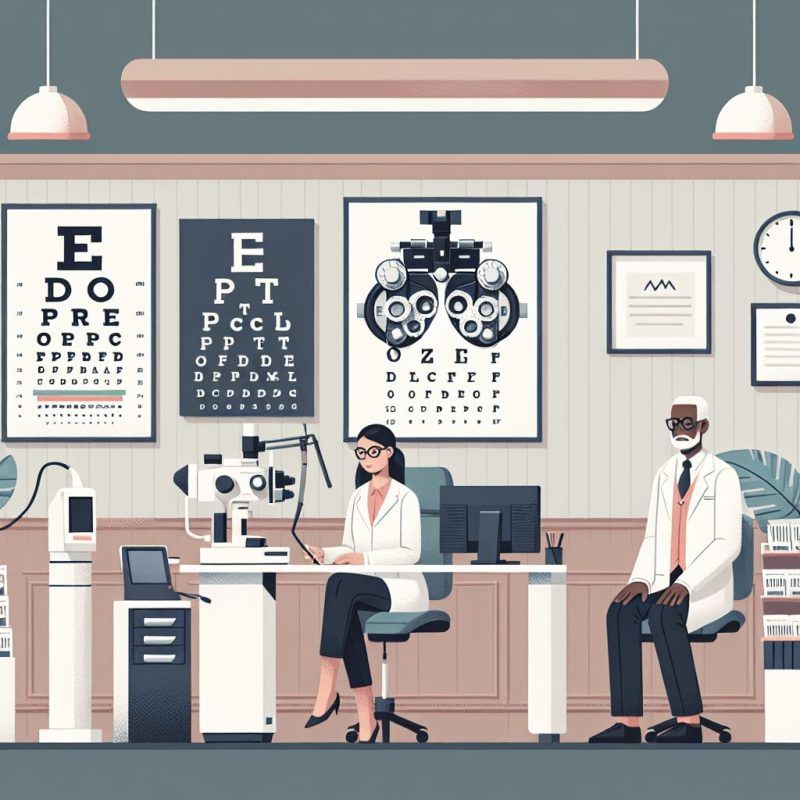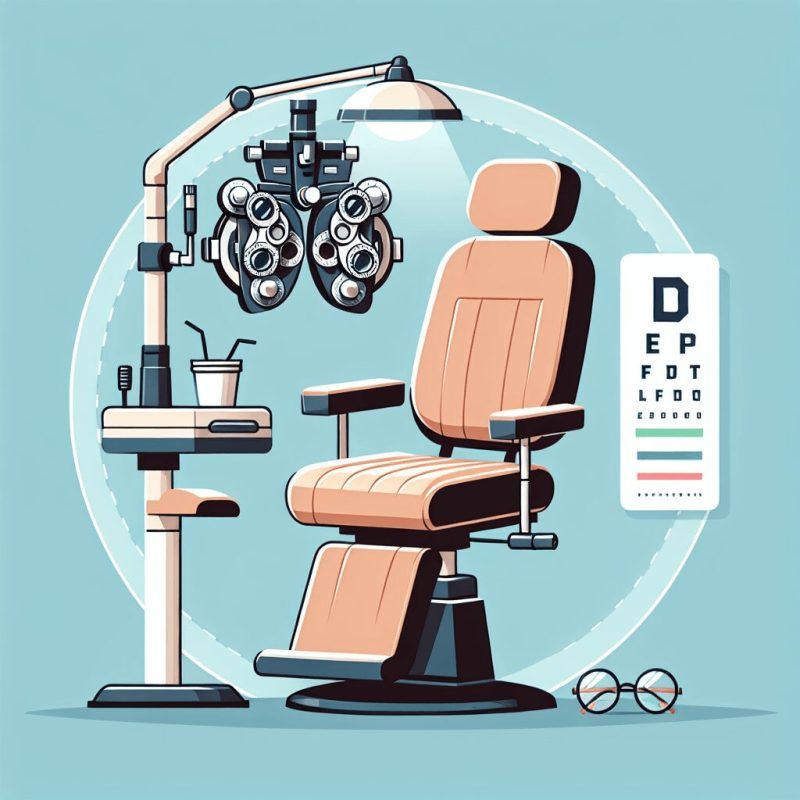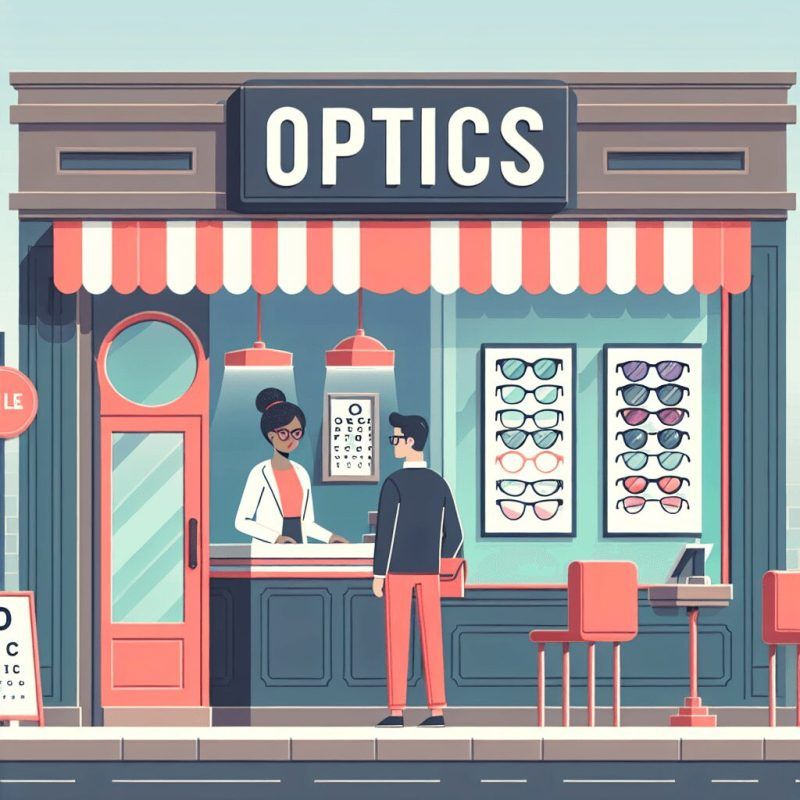Doctor's Corner
Children’s Eye Exam Near Me: Where to Find the Best Care
Selecting appropriate eye care for your child is significant for their growth and education. Routine eye exams assist in identifying vision issues promptly. Since a large portion of learning relies on sight, a straightforward appointment can greatly influence your child’s visual experience.
In this article, we’ll offer recommendations on how to locate reputable children’s eye exams in your area and highlight what to consider when picking an eye care provider.
Importance of Regular Children’s Eye Exams
Regular eye exams for children are important because they help in the early detection of vision problems, such as amblyopia, strabismus, and myopia. A pediatric eye doctor can use specialized techniques to assess children’s eyes and visual systems, guiding necessary treatment like prescription lenses or vision therapies. This early intervention is significant since 80% of learning is visual, meaning that untreated vision issues can hinder a child’s educational and motor development.
For instance, if a child has developmental delays or a family history related to eye conditions, regular check-ups remain important. Parents facilitate access by scheduling these appointments, ideally starting at six months of age and continuing through their school years. They can notice signs like squinting or avoiding activities, prompting a visit to the general eye doctor.
Keeping track of eye health not only maintains comfort but also helps identify serious conditions, ensuring the well-being of children’s eyes. Pediatric ophthalmology provides secondary care and conducts clinical testing, which is important for diagnosing and treating visual impairment as children grow.
Understanding Common Eye Conditions in Children
Myopia and Its Prevalence
Myopia, or nearsightedness, is increasing among children due to factors like increased screen time and reduced outdoor activities. This condition can result in serious vision problems, including high myopia, which heightens the risk of eye diseases. In places like Ohio, pediatric eye doctors note that myopia is more prevalent in children with a family history of vision issues or developmental delays.
Regular eye exams from a pediatric optometrist are necessary for diagnosing myopia and other eye conditions, such as amblyopia and strabismus. Effective interventions, including myopia management, prescription lenses , and vision therapies, can enhance children’s eye health and comfort. Advances in technology within pediatric ophthalmology are aiding in the provision of secondary care and clinical testing for various eye issues. Early intervention can boost hand-eye coordination and motor development, positively influencing children’s long-term quality of life.
Moreover, access to services, treatment supplies, and educational information from children’s hospitals and statewide registries is enhancing pediatric healthcare outcomes and awareness.
How to Find a Children’s Eye Exam Near Me
Utilizing Online Resources
Parents can find reputable eye care providers for their children by using various online resources, including trusted healthcare websites and map view tools. Websites focusing on pediatric optometry provide information about the qualifications of pediatric optometrists and the services they offer, such as diagnosis and treatment for conditions like amblyopia and strabismus. Many general eye doctors also share appointment scheduling options for eye exams.
Parents can look for platforms containing reviews and testimonials from other families to learn about their experiences with eye doctors. This feedback can highlight the eye doctor’s approach to treating vision problems, such as myopia management and dry eye disease.
Additionally, resources from children’s hospitals and statewide registries, like educational information and treatment supplies for visual impairments, assist in guiding parents.
Local Recommendations for Eye Care
Parents can find qualified pediatric eye care clinics by searching for pediatric ophthalmologists or optometrists in their area, especially those affiliated with children’s hospitals. These clinics typically provide comprehensive eye exams, clinical tests, and follow-up care to diagnose conditions such as amblyopia and strabismus. Look for qualifications that include clinical training and experience working with children, particularly those facing developmental challenges or visual impairments.
Feedback from other parents often underscores the benefits of early intervention and how comfortable their children feel during visits. Parents value clinics that offer treatment supplies, like eye patches, and educational resources regarding conditions such as myopia and dry eye.
Additionally, ensuring the clinic has measures for comfortable visits, such as tear film assessments for eye health, can enhance overall satisfaction. The available resources can guide parents in addressing their child’s vision care needs, helping them select a facility that effectively supports their child’s development and visual comfort.
Evaluating Children’s Eye Care Facilities
Checking Qualifications in Ophthalmology
When searching for a pediatric ophthalmologist for their child, parents should check the doctor’s credentials, including board certification and specialized training in pediatric eye care. This ensures the doctor is skilled in diagnosing and treating conditions like amblyopia and strabismus. Parents can verify these qualifications by visiting the websites of local children’s hospitals or a statewide registry that might list qualified doctors.
Additionally, examining a pediatric optometrist’s training can provide insights. Professional organizations offer resources to help parents confirm board certifications and other credentials. Engaging with a general eye doctor for initial assessments can also guide parents to specialized care. Ensuring the chosen doctor has experience with visual impairment and common childhood eye conditions can contribute to better eye health.
During the first visit, parents should ask about available treatment supplies, like eye patches for amblyopia or options for myopia management, which can lead to effective early intervention in cases of vision problems that could hinder motor development or hand-eye coordination.
Examining Myopia Management Programs
When evaluating myopia management programs, effectiveness can be assessed through various criteria, such as the reduction in nearsightedness progression and overall improvement in children’s eye health. Strategies may include prescription lenses or contact lenses, as well as vision therapies tailored to individual needs. Safety is also a concern, with pediatric ophthalmology ensuring that methods minimize risks while providing beneficial long-term outcomes.
Patient education is significant; when families are informed about myopia, amblyopia, and conditions like strabismus, they are more likely to seek early intervention through regular eye exams. This education might cover symptoms like poor hand-eye coordination or signs of vision problems in infants and children. In Ohio, statewide registries help track visual impairment cases, fostering awareness among parents.
As pediatric experts conduct clinical testing of vision therapies and treatment supplies, including eye patches, they emphasize the significance of monitoring children’s eyes, especially for those with a family history of eye conditions or developmental delays. Regular check-ups can ensure that common issues like dry eye disease are addressed, promoting eye comfort and healthy vision as children’s eyes develop.
Assessing Patient Reviews and Testimonials
When reviewing feedback and stories about children’s eye care, parents should pay attention to aspects such as the quality of care, staff kindness, and management of specific eye conditions like amblyopia and strabismus. Observing how pediatric ophthalmologists interact with kids during exams can demonstrate their skill in delivering comforting care.
The frequency and recency of reviews are also important; a consistent flow of updated testimonials enhances trust, showing that families rely on the eye doctor for ongoing treatments, including dry eye disease and myopia management. Insights shared by other parents can reveal how well the facility addresses vision issues and provides prescription lenses or contact lenses. If reviews highlight successful diagnoses or treatment plans from pediatric specialists at a children’s hospital, this may reflect the expert’s competence.
Testimonials that mention helpful educational resources and supply provisions, like eye patches for lazy eyes, can reassure parents that their child’s eye health will be regularly monitored, contributing to improved developmental outcomes and visual comfort.
Popular Eye Care Options in Bellevue and Kirkland
Top Eye Care Clinics for Children in Bellevue
When selecting an eye care clinic for children in Bellevue, parents should consider the qualifications of the pediatric ophthalmologists and optometrists available, such as their training in pediatric health care and experience with common eye conditions like amblyopia and strabismus. The top clinics offer comprehensive services, including pediatric eye exams, diagnoses of vision problems, and treatments like prescription lenses or vision therapies.
This ensures that children receive the necessary care for conditions such as myopia management or dry eye disease. Feedback from parents often highlights the attentive approach of the staff, noting that they provide educational information and treatment supplies like eye patches for conditions requiring early intervention. Many appreciate the supportive environment that helps children feel comfortable during their first visit.
These clinics are equipped to handle developmental delays or visual impairments resulting from factors like premature birth or family history, while offering secondary care options and engaging in clinical testing to ensure the overall health of children’s eyes.
Recommended Pediatric Eye Specialists in Kirkland
The pediatric eye specialists in Kirkland hold advanced qualifications in ophthalmology and pediatric optometry, ensuring they are well-trained to handle children’s vision issues. These eye doctors conduct thorough eye exams that include assessments for conditions such as amblyopia and strabismus, which can affect eye health and motor development. Through early intervention, they address significant issues like myopia management to prevent high myopia later.
The team employs various techniques, including vision therapies and prescription lenses, to support children with developmental delays or visual impairments. Parents often express satisfaction with their child’s treatment, noting the careful attention to their needs and the effective communication from pediatric experts. They appreciate the specialists’ commitment to educational information on eye health and awareness of important eye conditions affecting children, such as dry eye disease.
Many families also recommend these appointments to help establish healthy visual habits from an early age. This positive feedback is a testament to the comprehensive care provided by these professionals, which encompasses clinical testing and general eye care tailored specifically for children.
Tips for Preparing for a Children’s Eye Exam
To prepare for a child’s eye exam, parents should gather important items, including any current eyeglasses or contact lenses and a list of past vision problems or eye conditions. Bringing a favorite toy or book can help ease any anxieties their child may have, as familiarity can create a more comfortable environment in the eye doctor’s office.
Parents should also note any family history of eye health issues, such as amblyopia or strabismus, which may inform the pediatric ophthalmology evaluation. It is helpful to bring documents that detail any developmental delays, previous treatments, or specific concerns about their child’s visual system disorders. This information can assist the pediatric optometrist in making an accurate diagnosis. Preparing in this manner ensures that the eye exam—whether for myopia management or basic eye health—is thorough and effective in addressing any vision issues that might impact the child’s learning, motor development, or overall eye comfort.
Understanding Treatments and Technologies
A pediatric ophthalmologist is instrumental in diagnosing and treating vision problems in children’s eyes. New advancements, such as enhanced diagnostic tools, enable eye doctors to detect conditions like amblyopia or strabismus more effectively.
For example, specialized vision therapies can improve hand-eye coordination and address developmental delays. Myopia management options offer early intervention, helping to prevent the progression to high myopia. Comprehensive eye exams assess overall eye health, including the tear film that contributes to comfort. In some cases, children may need prescription lenses, eyeglasses, or contact lenses to correct vision issues. Pediatric eye doctors are equipped with the latest technology for clinical testing, streamlining the examination process. Many offices collaborate with children’s hospitals, providing treatment supplies like eye patches and educational information for families, particularly in states like Ohio.
Educational Resources for Parents
Parents looking to understand their child’s eye health can access a variety of educational materials that explain common conditions like amblyopia and strabismus. Pediatric ophthalmology experts provide guidance on when to schedule eye exams, highlighting the need for early intervention for issues such as myopia management and developmental delays. Credible information can be found through trusted websites associated with children’s hospitals or pediatric healthcare organizations.
Additionally, support groups may offer personal experiences and connect families dealing with similar vision challenges, helping them learn about treatments like prescription lenses or vision therapies. Local optometrists may host informational sessions, providing parents with practical knowledge about their child’s visual system and the importance of maintaining eye health. Community resources in Ohio can also provide access to treatment supplies like eye patches for amblyopia.
Becoming familiar with these resources enables parents to advocate for their child’s eye comfort and effectively address potential vision issues.
FAQ
What age should my child have their first eye exam?
Your child should have their first eye exam by age 1, again at age 3, and before starting school. Look for signs like squinting or rubbing eyes. Schedule the exam with a pediatrician or an optometrist for early detection of vision issues.
How do I find a pediatric eye doctor near me?
To find a pediatric eye doctor near you, search online using terms like “pediatric eye doctor near me” or use online platforms. You can also ask your child’s pediatrician for recommendations or check with local hospitals for specialized clinics.
What should I expect during my child’s eye exam?
During your child’s eye exam, expect vision tests using charts and tools, pupil dilation for a thorough inspection, and discussions about eye health. Prepare your child by explaining the process and bringing any glasses or eye-related concerns.
Are there specific signs that indicate my child needs an eye exam?
Yes, look for signs like frequent squinting, rubbing eyes, difficulty reading, holding books close, or complaints of headaches. If your child has blurry vision or avoids activities like reading or playing sports, it’s time to schedule an eye exam.
How often should my child have eye exams once they’ve started?
Children should have their first eye exam at six months, then again at 3 years, and before starting school. After that, annual exams are recommended. If your child wears glasses or has vision issues, consult your eye doctor for more frequent check-ups.
Give your child the best start with expert eye care. Visit Superior Eye Care in The Woodlands or Quality Eye Care in Willowbrook, Texas, for a comprehensive children’s eye exam. Our specialists ensure your child’s vision is on track, supporting healthy development and success in school.
The post Children’s Eye Exam Near Me: Where to Find the Best Care first appeared on Optometrist in Woodlands & Willowbrook TX.
Doctor's Corner





